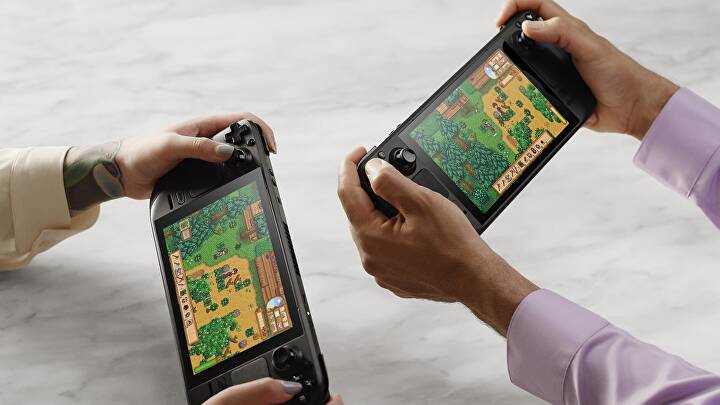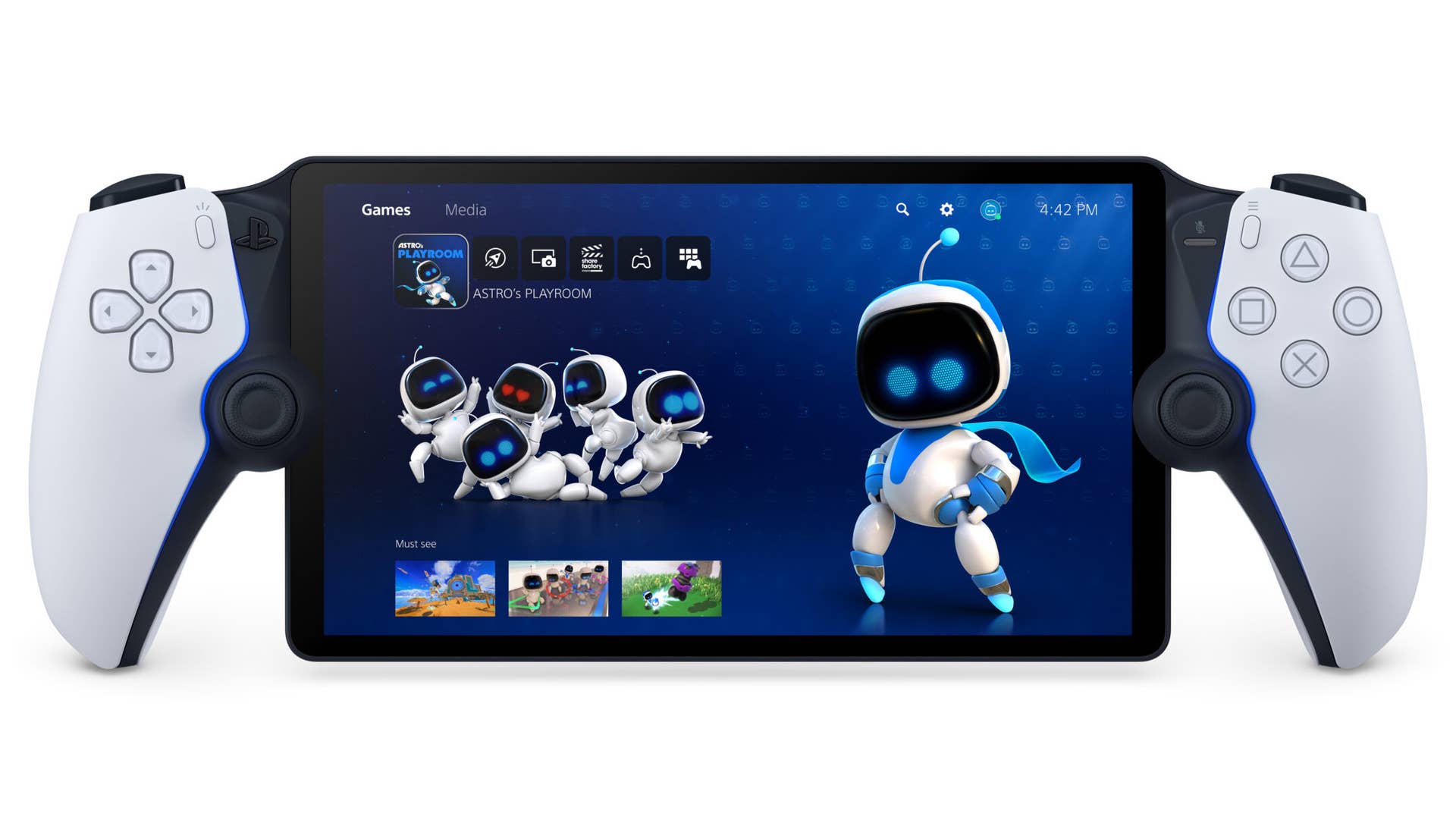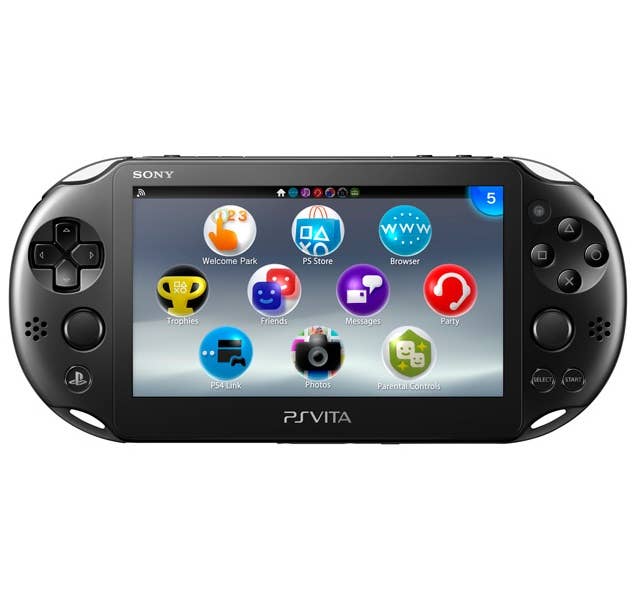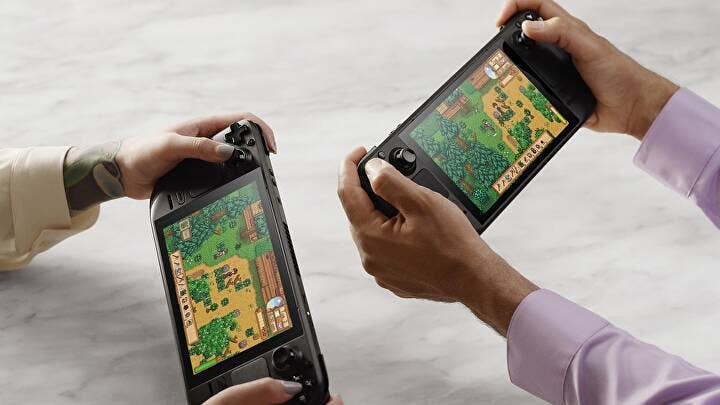Once thought destroyed by smartphones, handheld gaming devices are now a hot sector; but nobody whose name isn’t Nintendo is actually selling many

Like most industries, the games business is driven by trends and cycles. It’s rare for there to be something truly new in the world; more often, we see old ideas come back into fashion on the upcycle of the wheel, even as the trends of the moment peak and start their downward journeys.
Handheld gaming is very much on an upwards arc right now. More or less confined to the trash heap of history by the emergence of the smartphone, handheld devices were resurrected by the success of the Switch – and now it seems like everyone wants a slice of the action.
Sony is reportedly working on a return to the handheld market, with the peculiar PlayStation Portal device perhaps serving as a cautiously dipped toe in the water. Microsoft has teamed up with Asus to co-brand new ROG Ally Xbox gaming handhelds – part of a buzzy new category of PC gaming handhelds that was kick-started by Valve’s celebrated Steam Deck.

In the midst of all of this, we’ve also seen a report – albeit unconfirmed, and deserving of a huge pinch of salt given how much dodgy information floats around the hardware market at the best of times – that Microsoft was working on a first-party Xbox handheld device, quietly dropped when it couldn’t commit to the volume of orders chip maker AMD would have needed to move ahead.
Given the seeming enthusiasm around handhelds more generally, especially in the wake of Switch 2 outperforming the sales curve of its massively successful predecessor, this stands out as an oddity. It’s easy to see how it could be read as an internal vote of no confidence in Xbox hardware more broadly; with handhelds all the rage, why wouldn’t Microsoft think it could sell the 10 million units AMD (reportedly) needed it to commit to?
In truth, even if Microsoft’s console business were firing on all cylinders right now – which it is most decidedly not – the handheld space is an incredibly tough market and always has been.
We don’t know what the status of Microsoft’s ongoing negotiations with AMD may be, other than knowing that they’re still happening, since the partnership is central to any future hardware ambitions the company may have. We certainly don’t know whether the chipmaker has its you-must-be-this-tall-to-ride sign for custom components set at 10 million units. We can say with certainty, though, that 10 million units of a handheld device is an incredibly steep ask – for any company, at any time.
The sole exception to that rule is Nintendo, a company that has more or less built its business around the handheld market for the best part of four decades. For every other company, the handheld gaming device sector is a minefield at best, and a graveyard at worst. (I am aware, thank you, of exactly how messy a graveyard crossed with a minefield would be. I said what I said.)

Consider the PlayStation Vita, Sony’s second effort in the handheld space after the generally well received PlayStation Portable. The company made various mistakes with the Vita, of course, but the consensus was that the device itself was pretty fantastic – beautifully designed, surprisingly powerful, and with a gorgeous screen. It topped out at 14 million units sold before being discontinued – this, at a moment in time when Sony’s home console business was going absolute gangbusters.
Vita is remembered somewhat fondly, at least, but those install base numbers are only ahead of the disastrous Wii U by a neck. Its predecessor of course had done far better – the PSP racked up over 75 million units by the end of its lifespan – but the point that Sony couldn’t eke out a decently performing handheld even as the PS4 dominated living rooms still stands. It took two generations of Nintendo absolutely cleaning up in Sony’s home market with devices that look like PS Vita’s grown-up cousin for the company to even think about re-entering this space – and it remains to be seen just how willing it is to make a serious commitment on that front.
Microsoft’s dalliance with the PC gaming handheld space also deserves some attention, because this is an area where the degree of excitement and activity doesn’t seem to have been matched with sales and consumer interest. Asus and other manufacturers have launched a variety of products to compete with Valve’s Steam Deck, but the stir they make in the media seems to be out of proportion with how many consumers are actually buying these things.
After all, even the device that inspired them hasn’t exactly been a transformative commercial success. The Steam Deck is a wonderful and beloved device – for the relatively small number of consumers who own one. It’s to Valve’s great credit that it seems to have figured out how to carve a niche in the handheld market where it doesn’t need huge hardware sales numbers to succeed; notably, it’s been reported that the chipset in the original Steam Deck models was repurposed from a custom APU built for the ill-fated Magic Leap AR glasses – which presumably helped to avoid any demands for committing to ordering 10 million units.
Rather than needing to sell tens of millions of units, the uplift Steam Deck provides to the Steam platform more broadly easily justifies its existence, especially given that Steam Deck owners are reportedly among the platform’s most loyal and high-spending consumers. It’s just as well; some sales numbers place the Steam Deck at under 5 million lifetime sales, and it was reportedly leapfrogged by Switch 2 in its first week on the market.
In other words, if you cut through the froth, there isn’t actually anyone out there selling tens of millions of units of any handheld devices that aren’t called “Switch”. Steam Deck is a valuable and thriving niche, but a niche nonetheless. Sony’s last effort in this space barely outsold the Wii U and whatever it’s working on now remains unseen and unconfirmed. As to the others, I’d be shocked if the cumulative sales of every single non-Steam Deck handheld approaches anywhere near to a million units between them.
Even given all of this, the interest in handheld gaming is real – the upswing is happening – it just isn’t quite clear who, apart from Nintendo, is going to manage to grab hold of the wheel as it rises.
For Microsoft, whose strategy focuses around creating more and better venues for people to engage with Game Pass, working with hardware partners to improve the PC handheld experience makes a lot of sense. Building a dedicated handheld Xbox with a commitment to sell at least ten million units, though, would have been pure hubristic madness. Like many people, I’m fascinated to see what Microsoft actually does with its console hardware strategy in future – but walking into the handheld minefield before it’s even managed to walk a straight line in home consoles would not be the smart move.

